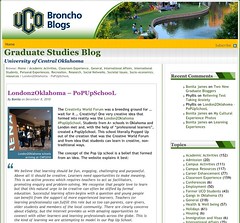
Thanks to Ms Keville and Ms Piwko we have begun the process of re-thinking our
Manifesto for a Creative Tallis. The
original manifesto, which has been shared with the whole staff body and was ratified by the Leadership Team, has helped to put creative learning at the centre of the school's learning and teaching vision. It is sent out to all new prospective members of staff and a question related specifically to creative learning features in all new job interviews. In our discussions at the start of this year, we felt that the manifesto needed to be revisited. It was perhaps a bit long and not very memorable. It needed a refresh and, possibly, some serious reflection on making the ambitious statements a reality.
Here are Ms Piwko and Ms Keville's initial thoughts, presented in suitably diagrammatic form:

Here is the first draft of the new statements:
WE CELEBRATE CREATIVITY IN OUR COMMUNITY OF LEARNERS
We encourage:
- all learners to become inquisitive, imaginative and innovative
- all learners to take risks, accept challenges and learn from mistakes
- everybody to reflect on their learning experiences
We support our students to become:
- resourceful and active learners
- effective collaborators and communicators
- independent learners/thinkers
We believe:
- in the exchange of skills and knowledge between students and staff
- that the use of new technologies is a crucial part of learning in the 21st century
We value:
- our students' talents, skills and interests and provide opportunities to develop them further
- feedback and ideas from students about their learning experiences
- effective communication about creative learning with parents, carers and members of the local community
We discussed this proposal at our extraordinary meeting before the Christmas holiday and decided to make the following revisions:
(Section 1: We ENCOURAGE……)
- ‘all learners to become curious, imaginative and innovative ( the word curious has replaced inquisitive in the statement )
(Section 2: We SUPPORT……..)
- Resourceful, active and independent learners
- Effective collaborators and communicators
- Co-creators of the curriculum (this statement has been added as we discussed the importance of students creating the curriculum/ learning experiences with teachers)
(Section 3: We BELIEVE……)
- in the exchange of skills and knowledge between students and staff.
- that skills should be transferable
- new technologies are a crucial part of learning
We talked about the possibility of employing a graphic designer to help us re-present these statements in a more visually stimulating form, perhaps even creating an interactive web based resource that would allow the viewer to explore some of the implications of each statement with examples of successful creative learning, ideas for further research and short video clips of discussions with students, staff members, parents/carers, experts etc.
Whilst browsing in a book shop this evening I discovered a new book by one of my favourite artists, Keri Smith. It's called 'Mess' and describes itself as a 'Manual of Accidents and Mistakes'. This prompted me to check out her excellent
website and
Flickr account, where I discovered the following manifesto:

Here is the text in full:
The Rebel's Manifesto:
1. Do the opposite of what you were taught in school.
2. Care not for the opinions of others. They are based on their own thoughts and fears.
3. Study the work of other rebels. Steal things from them. Research with fury.
4. Forget about the competition. They are on a different path than you. Trends are for suckers.
5. "There's nothing we really need to do that isn't dangerous." John Cage. Do the things that scare you on a regular basis.
6. Make a mess.
7. Embrace your darkside. Your so called "dark qualities" (or labels) are a source of great power. Find a way to incorporate them into your work. Feature them. pay particular attention to what makes you angry.
8. Exercise your voice. Put your thoughts out into the world even if it scares the shit out of you (see number 5).
9. Expand your horizons. Leave home. Visit other places/cultures. Wander aimlessly.
10. Never limit your play-time. Even if your brain is telling you otherwise. All of your best stuff comes from it if you allow yourself to remain open to the unknown.
11. Question everything.
13. Follow your heart.
I love this for several reasons. The language is quite informal and includes some direct challenges. It's quite irreverent and funny. It feels exciting and surprising. Number 12 is missing. I wonder if we can learn anything from existing manifestos?
As promised I will begin to do some research about potential sources of funding to employ a designer to help us re-present our Manifesto. In the meantime, I wonder if we ought to give some thought to the next document needed to make the statements in our manifesto more of a reality in school - an implementation strategy.












